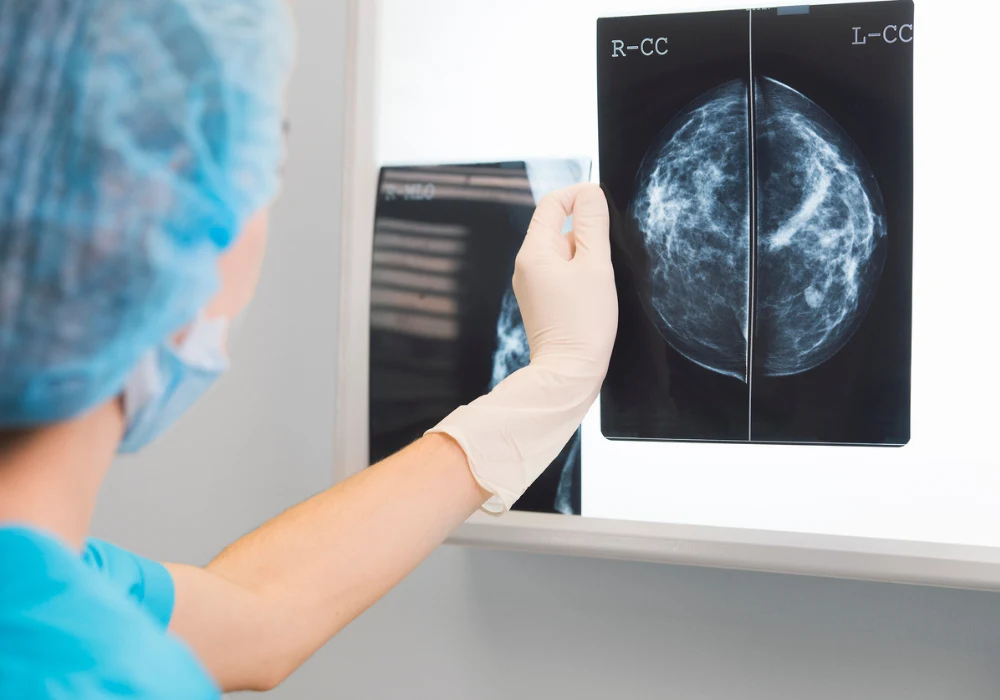Contrast-enhanced mammography (CEM) is gaining prominence as an important technique for detecting and diagnosing breast cancer, offering both morphological and physiological information in a single examination. By combining low-energy mammographic images with recombined high-energy images following the administration of iodinated contrast medium, CEM enables improved detection of fast-growing aggressive lesions and better differentiation between benign and malignant findings. This capability is particularly valuable for women with dense breast tissue, where conventional mammography often faces limitations. A recent two-centre retrospective evaluation explored the use of high-concentration iodinated contrast medium (HCCM) at 400 mgI/mL, administered at a reduced overall iodine dose but with a higher iodine delivery rate (IDR), to determine whether diagnostic accuracy could be maintained while improving sustainability in contrast use.
Enhancing Diagnostic Potential with High Iodine Concentration
Conventional CEM protocols typically use contrast media with iodine concentrations between 300 and 370 mgI/mL, delivered at 1.5 mL/kg and flow rates of 2–3 mL/s. These parameters can result in different iodine delivery rates, influencing enhancement quality and the visibility of lesions. The evaluated protocol took a different approach, administering 1.0 mL/kg of contrast at 400 mgI/mL and a rate of 3 mL/s, achieving an IDR of 1.2 gI/s. This higher concentration means more iodine reaches the bloodstream per unit of time, potentially improving the detection of malignant neoangiogenesis, a key feature of aggressive tumours. Importantly, the increased concentration allowed for a reduction in the total injected volume, lowering the overall iodine load while maintaining optimal image quality. This reduction can improve patient comfort during injection, decrease contrast waste and contribute to environmental protection by reducing the release of iodinated agents into water systems. The study also noted that higher iodine concentration was not linked to an increased risk of nephrotoxicity, supporting its safe application in clinical practice.
Must Read: Optimising Mammography Screening with AI
Performance in Detection and Characterisation
The evaluation included 205 women referred for CEM between March 2021 and February 2022, all of whom had undergone conventional mammography and ultrasound as initial assessments. CEM was used when previous imaging produced inconclusive or contradictory results, for preoperative staging, or for monitoring treatment response. Among these patients, 149 malignant lesions and 56 benign findings were confirmed through histology or long-term imaging follow-up. Using HCCM, sensitivity for breast cancer detection ranged from 96 to 97% and specificity from 84 to 87.5%, with overall accuracy between 93 and 95%. By comparison, ultrasound achieved 94.6% sensitivity and 71.4% specificity, while conventional mammography recorded 84.6% sensitivity and 46.4% specificity. The advantage of CEM was even more evident in women with dense breasts, where lesion visibility is often reduced with standard techniques.
CEM using HCCM showed high sensitivity across histologic subtypes, including 100% detection rates for invasive lobular carcinoma and ductal carcinoma in situ, and 95–96% for invasive carcinoma of no special type. It also demonstrated value in differentiating breast cancer molecular subtypes, particularly HER2-positive and luminal-like lesions. Performance remained consistently high regardless of breast density, and inter-reader agreement was substantial, with Cohen’s kappa values above 0.9 for key parameters such as BI-RADS categorisation. These results align with previous findings showing CEM’s ability to match or exceed the diagnostic performance of breast MRI in certain contexts, while offering greater accessibility and lower cost.
Implications for Clinical Practice and Sustainability
The ability to achieve strong diagnostic results with reduced contrast volume has several benefits for patient care, operational efficiency and sustainability. For patients, the shorter injection time and lower overall iodine dose can improve comfort and tolerance, which may be especially important for those undergoing repeated imaging or with borderline renal function. For healthcare providers, reduced contrast use helps conserve resources, address supply constraints and minimise environmental impact. These advantages support broader initiatives to optimise contrast usage in radiology while maintaining high standards of care.
In clinical terms, the high sensitivity and specificity achieved with HCCM reinforce its suitability for second-level imaging when initial mammography or ultrasound results are inconclusive. Its strong performance in dense breast tissue also highlights its potential role in screening strategies for women at higher risk. Moreover, by delivering both morphological and functional information, CEM can provide comprehensive assessments that inform diagnosis, staging and treatment planning, without the need for more costly or less accessible alternatives in many cases.
High-concentration contrast-enhanced mammography offers a robust, patient-friendly and resource-efficient alternative to conventional CEM protocols. By delivering a higher iodine delivery rate with a reduced total volume, it achieves excellent image enhancement and diagnostic performance while lowering iodine exposure and supporting sustainability goals. Its proven ability to detect and characterise a wide range of breast cancer types, even in challenging imaging contexts, positions it as a valuable tool for enhancing breast cancer detection and diagnosis across diverse patient populations.
Source: Insights into Imaging
Image Credit: iStock










